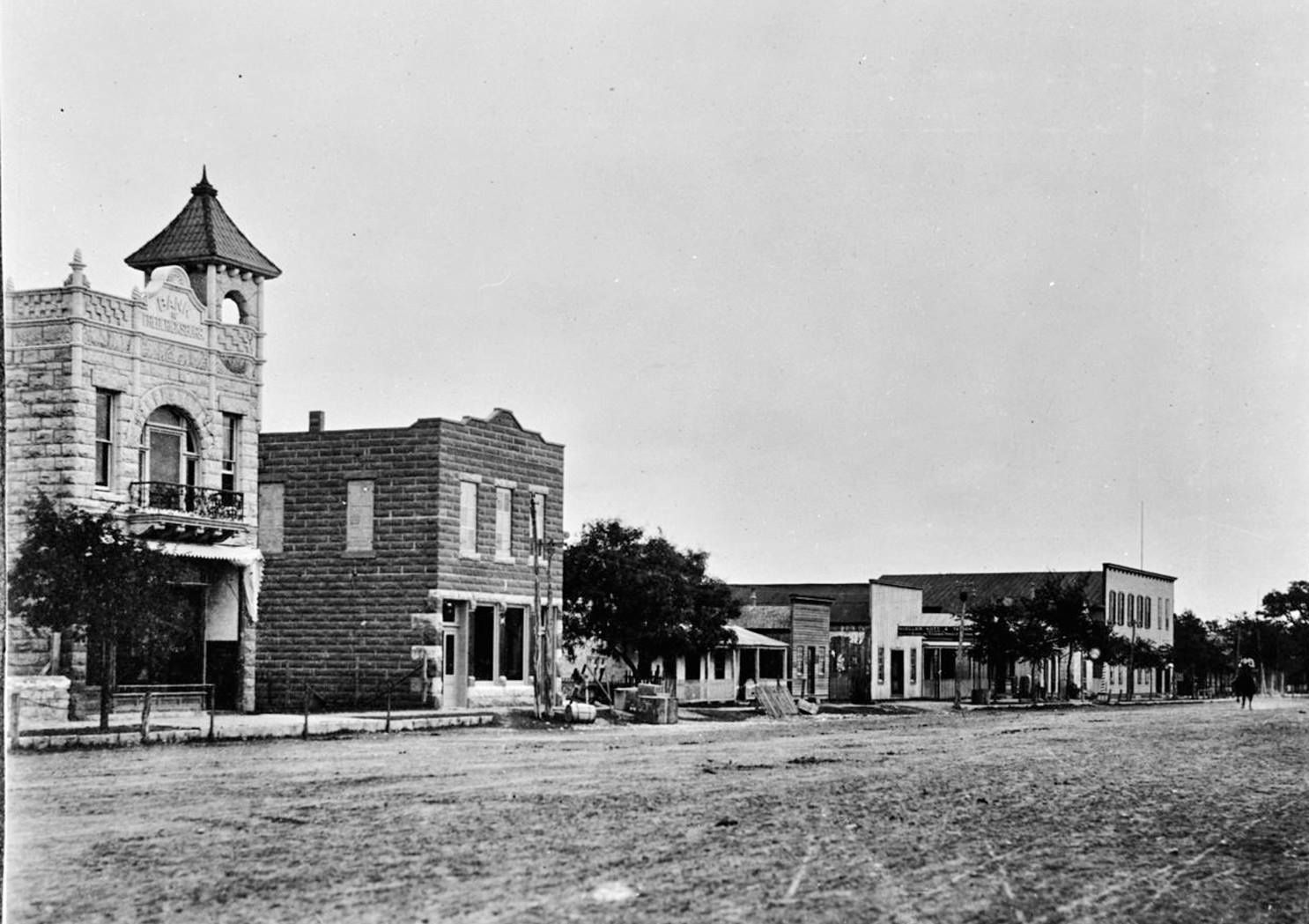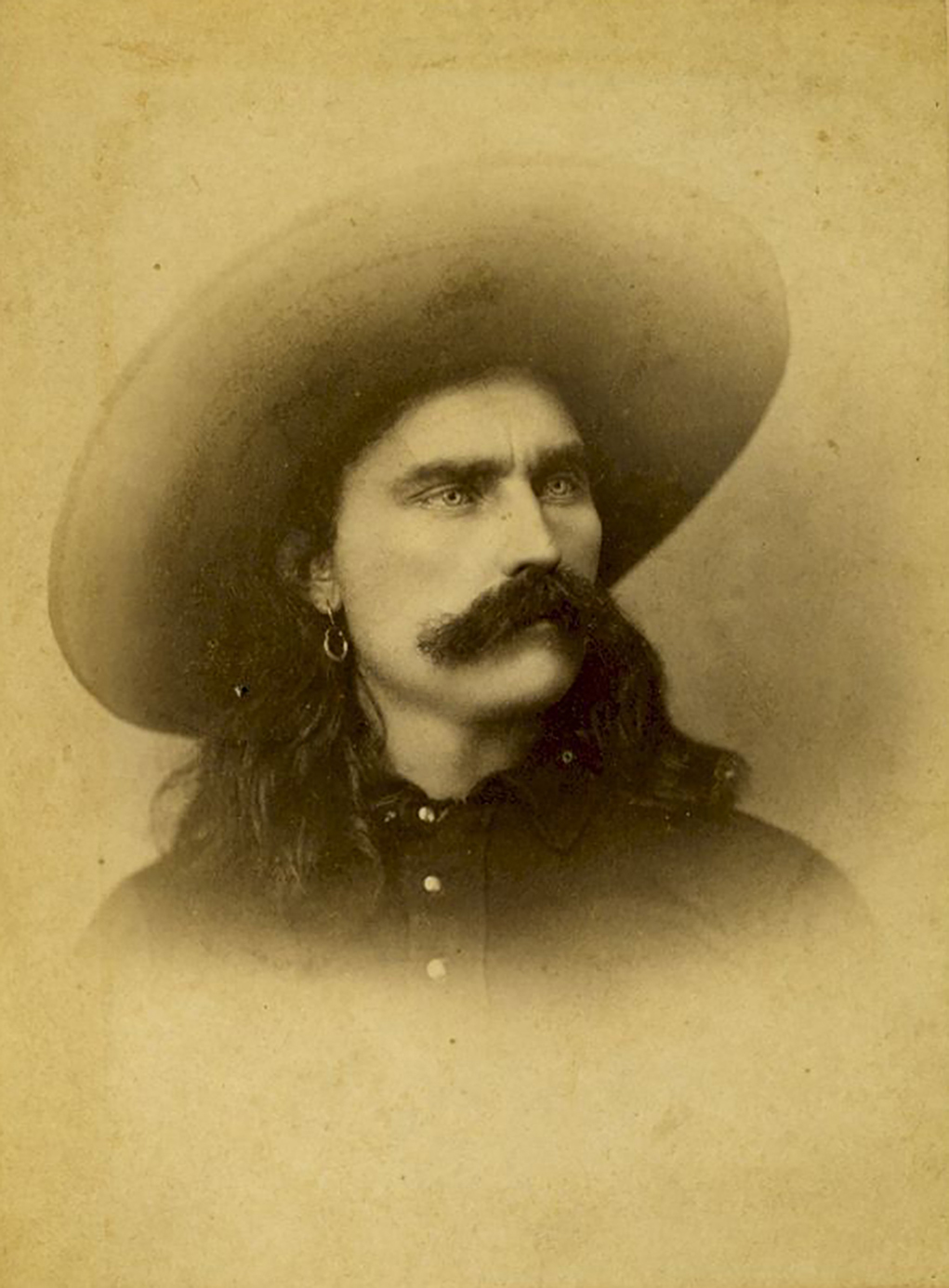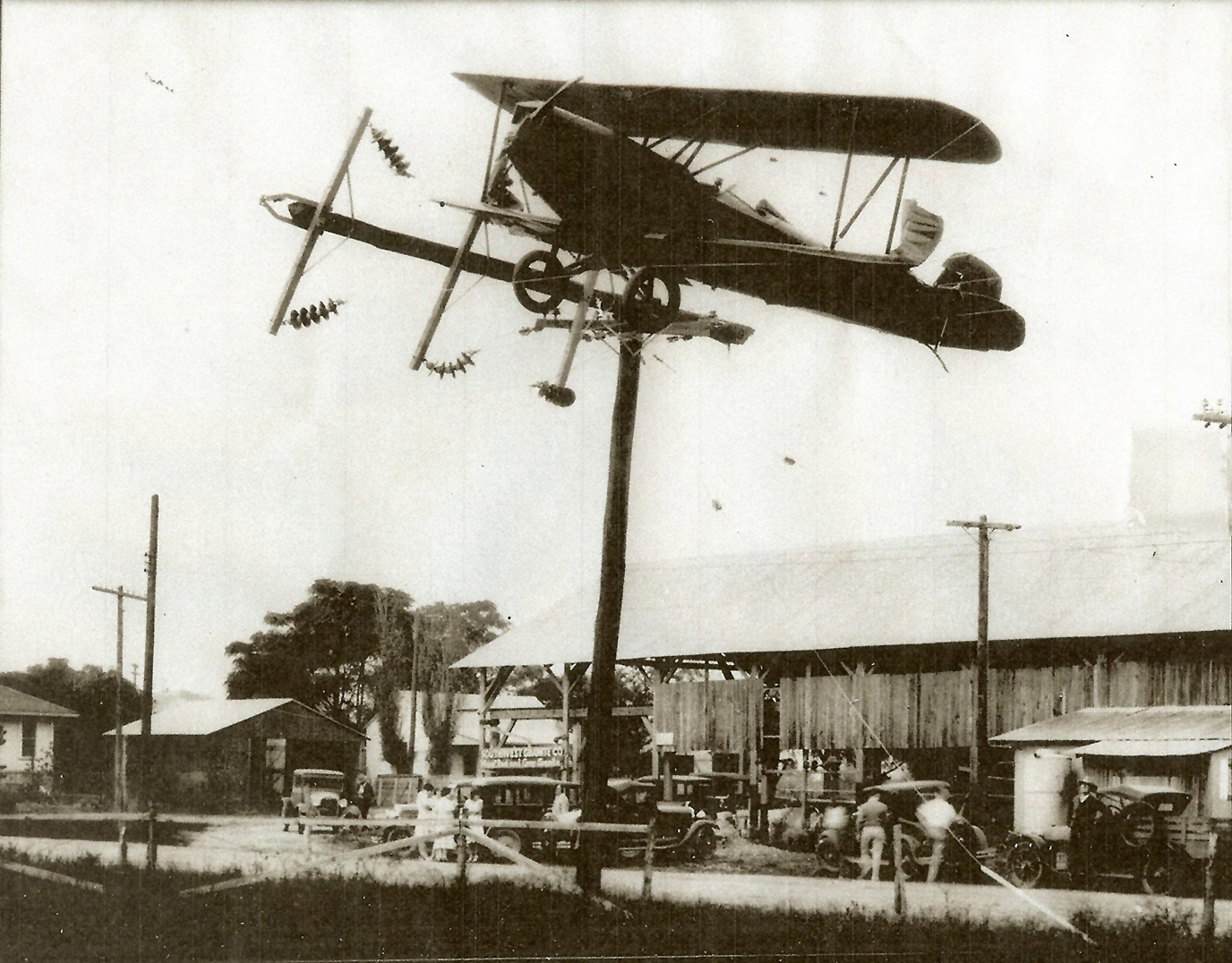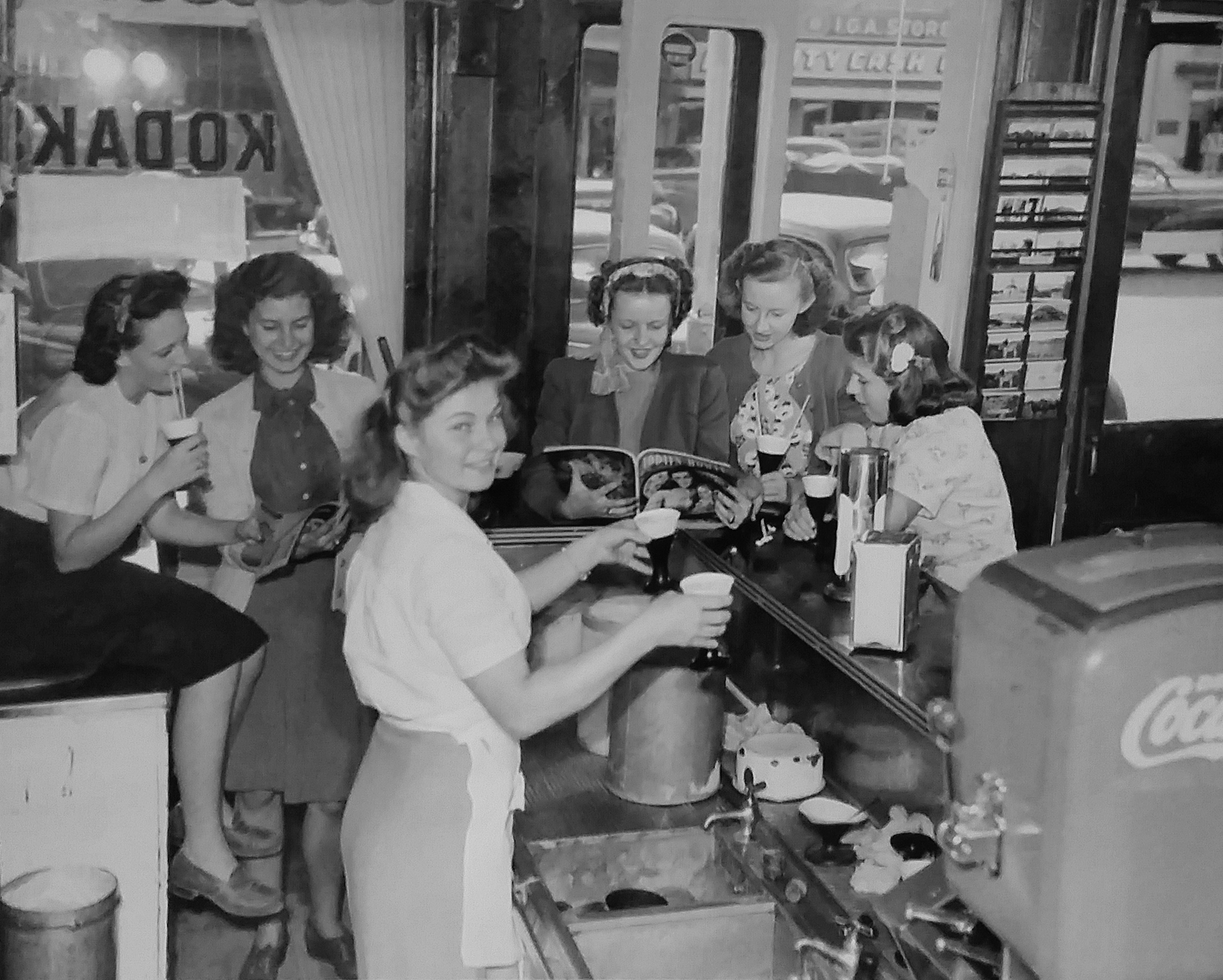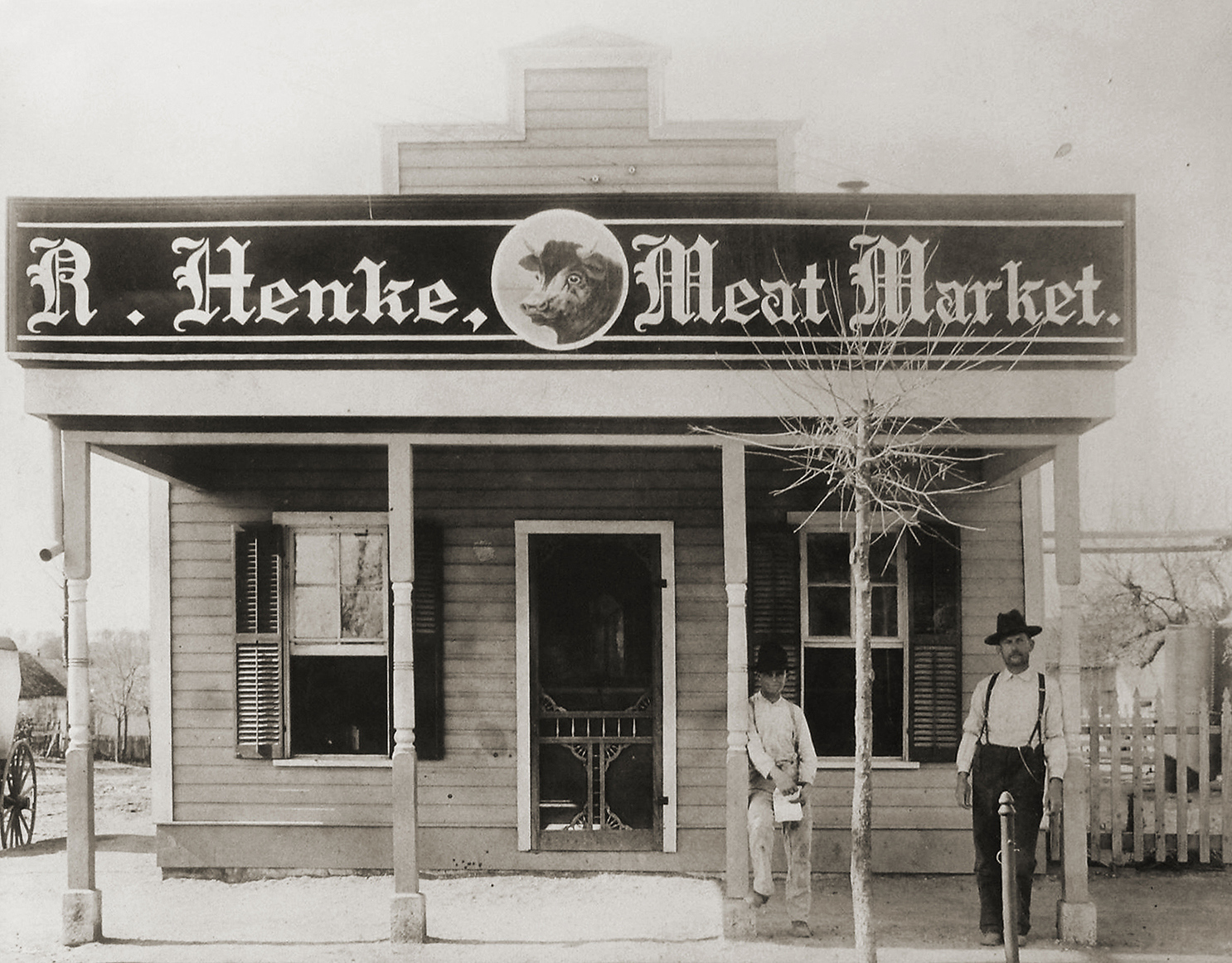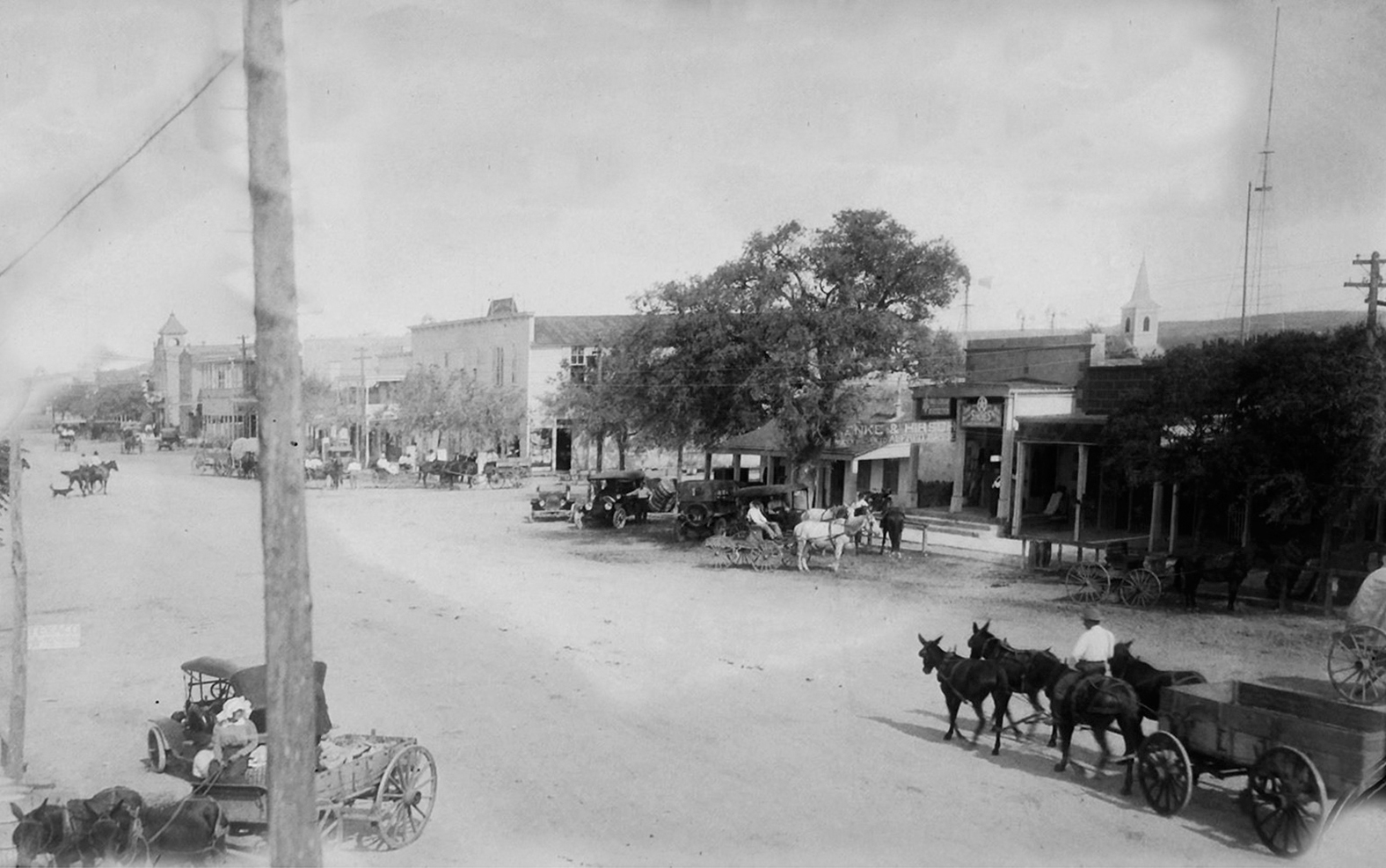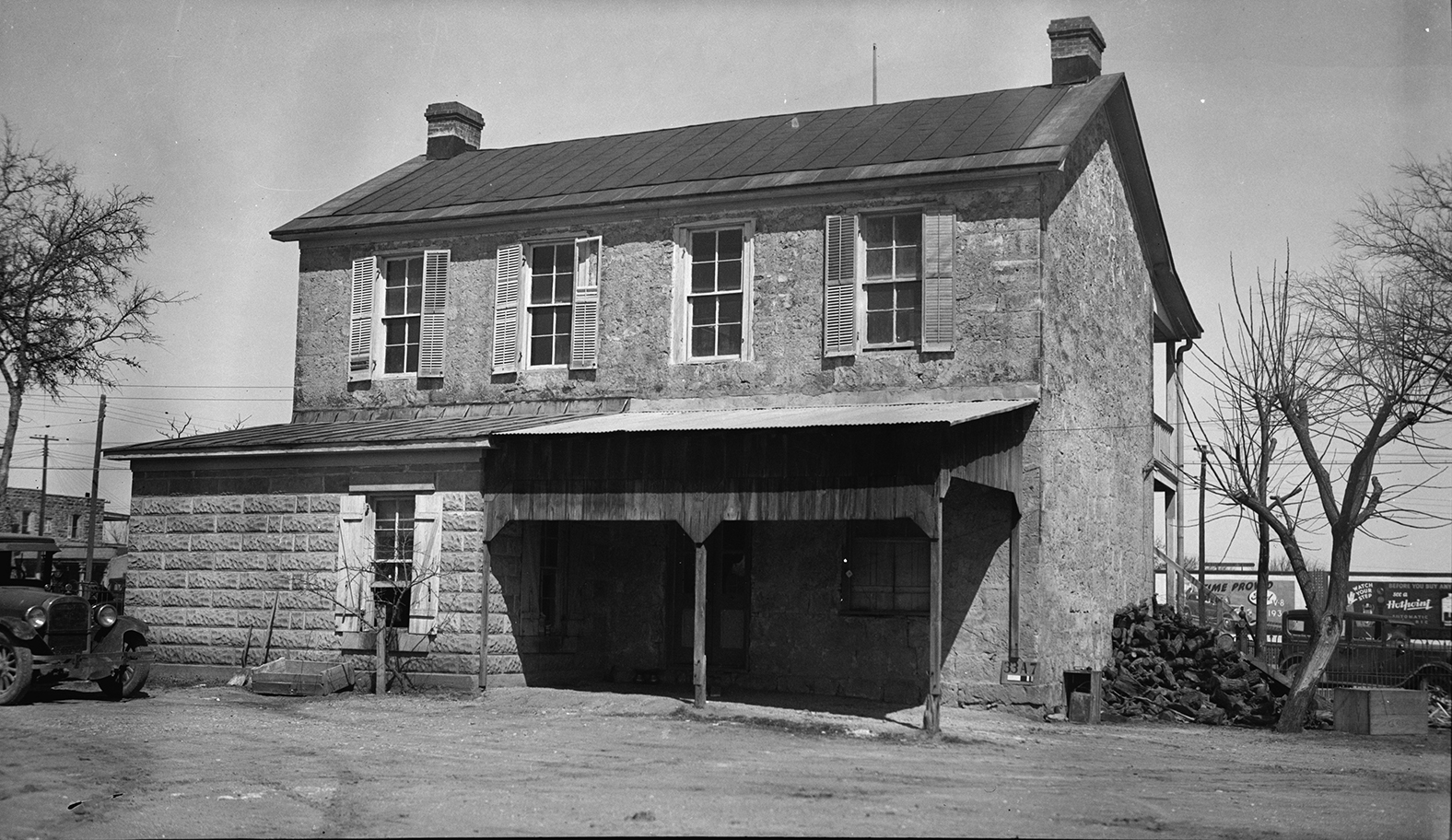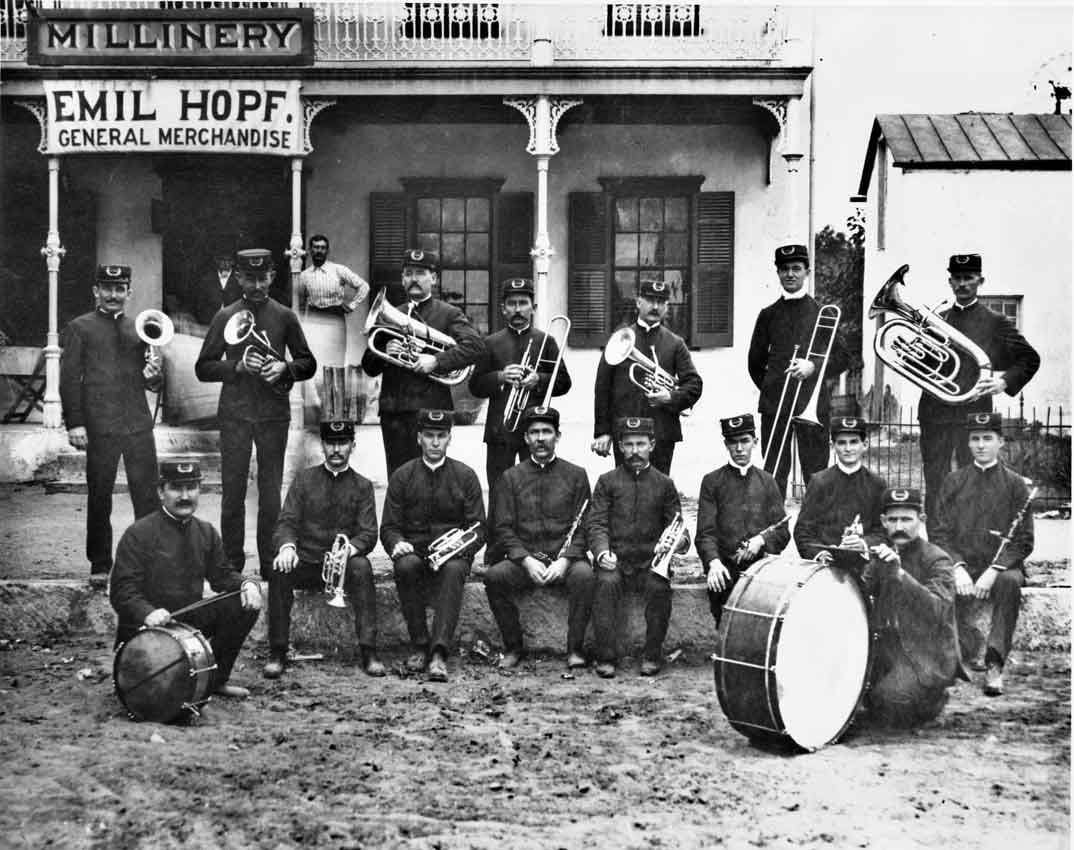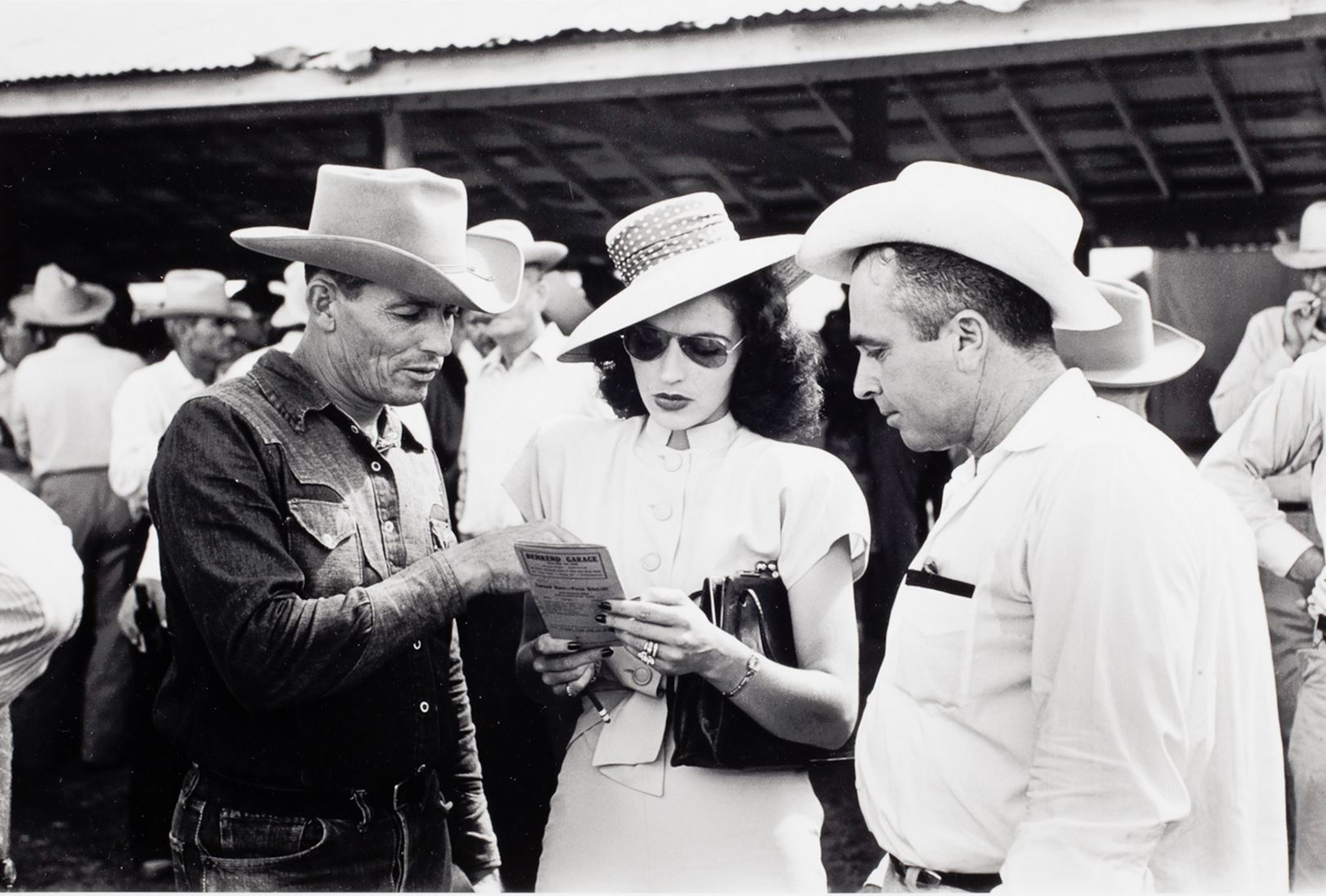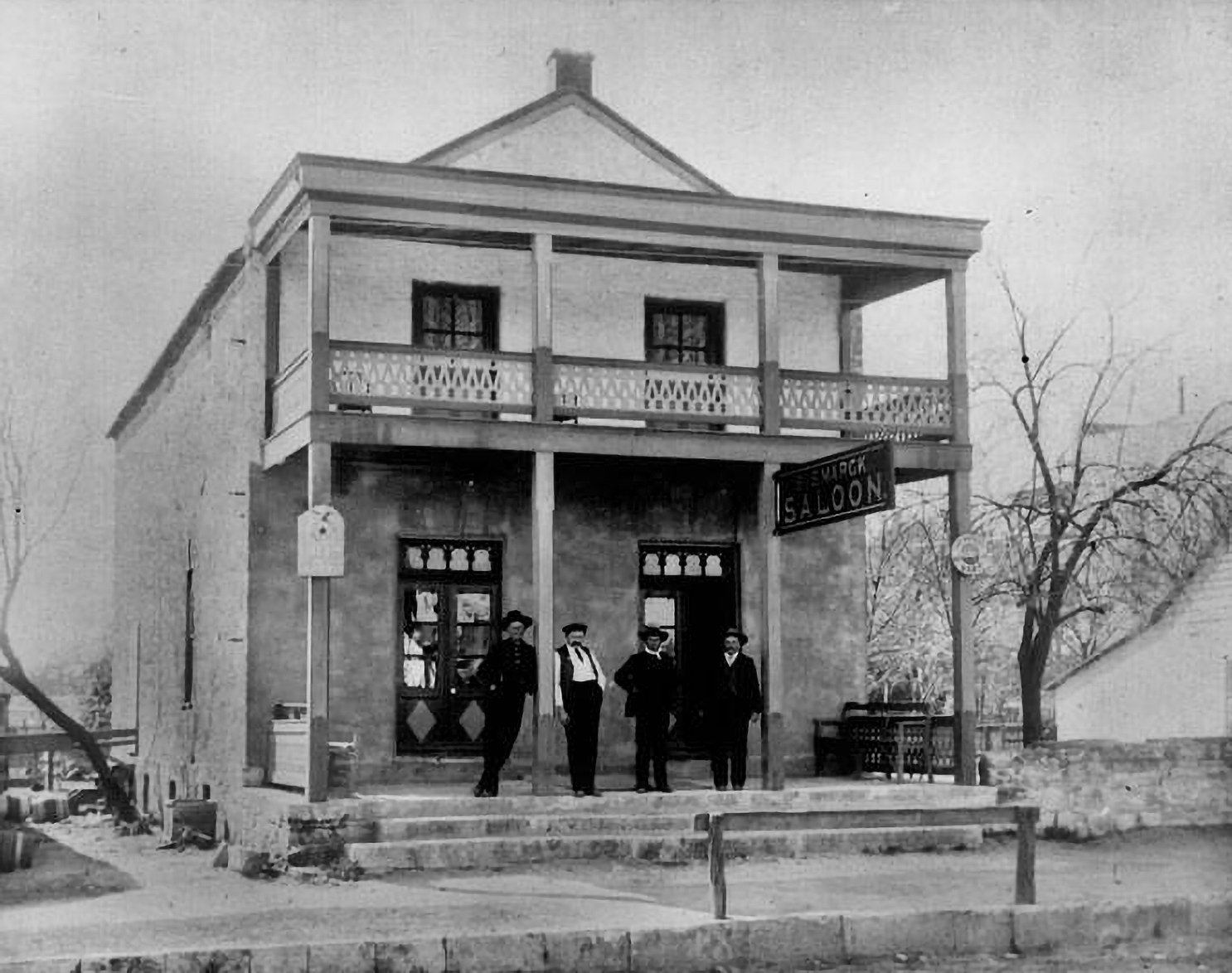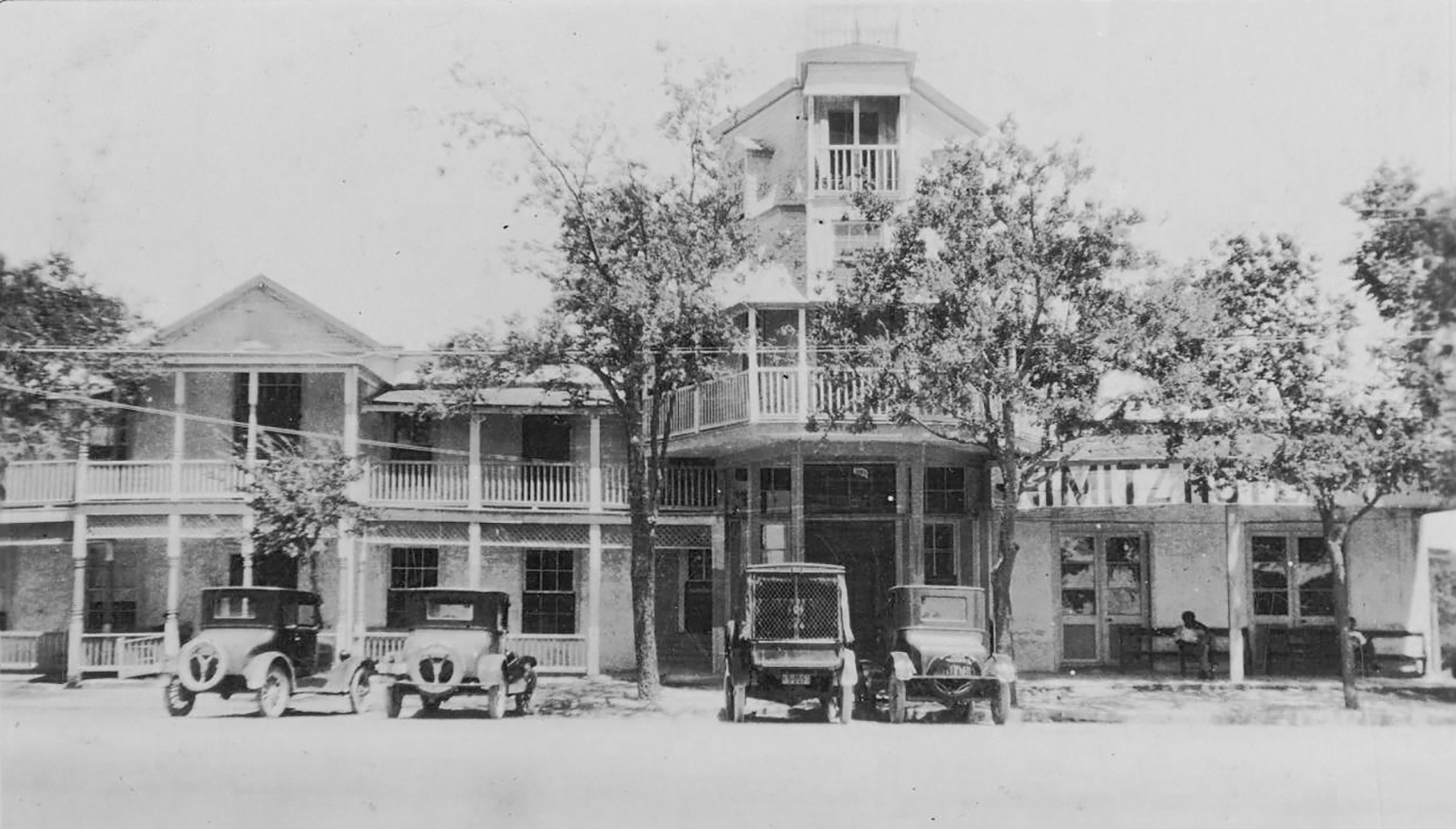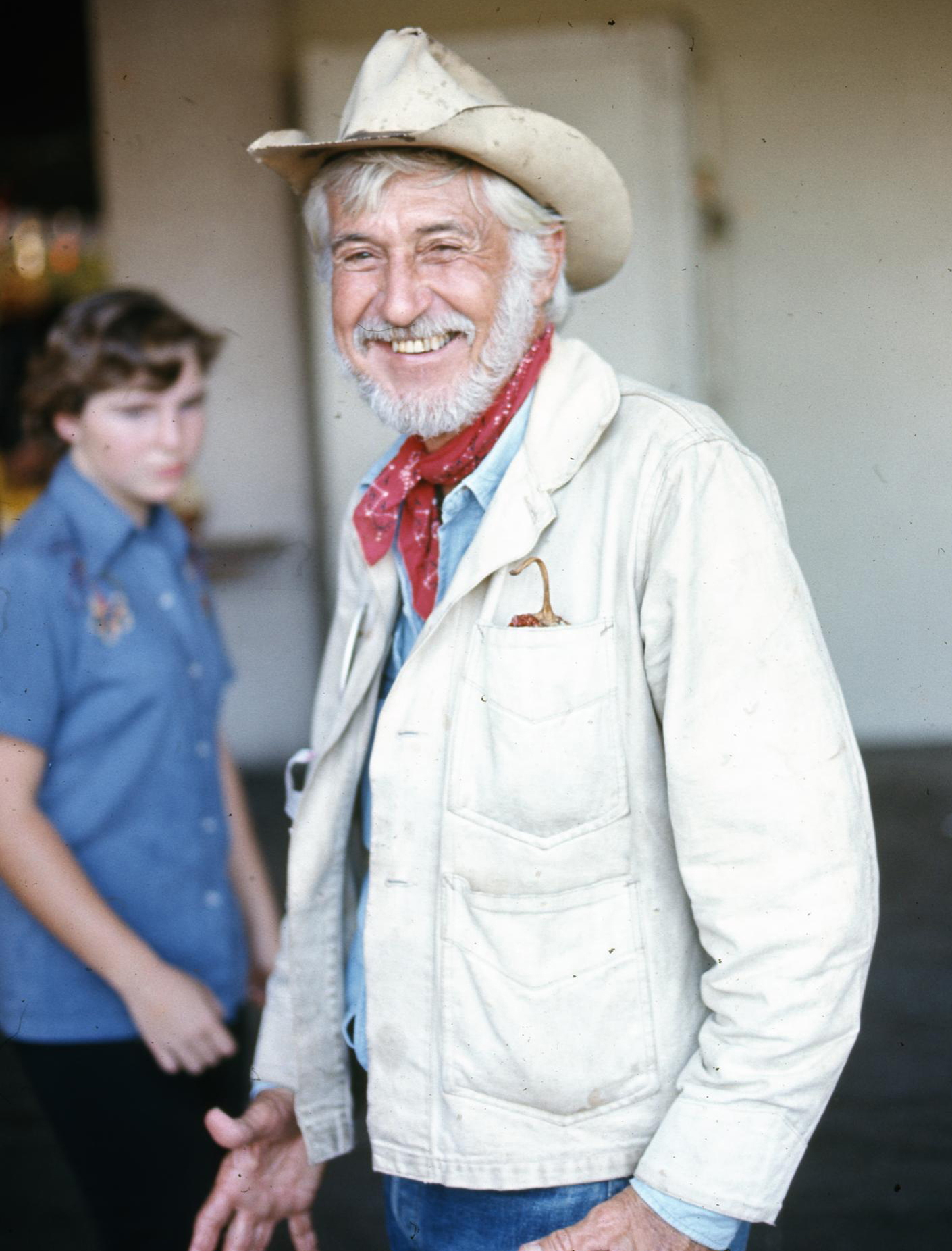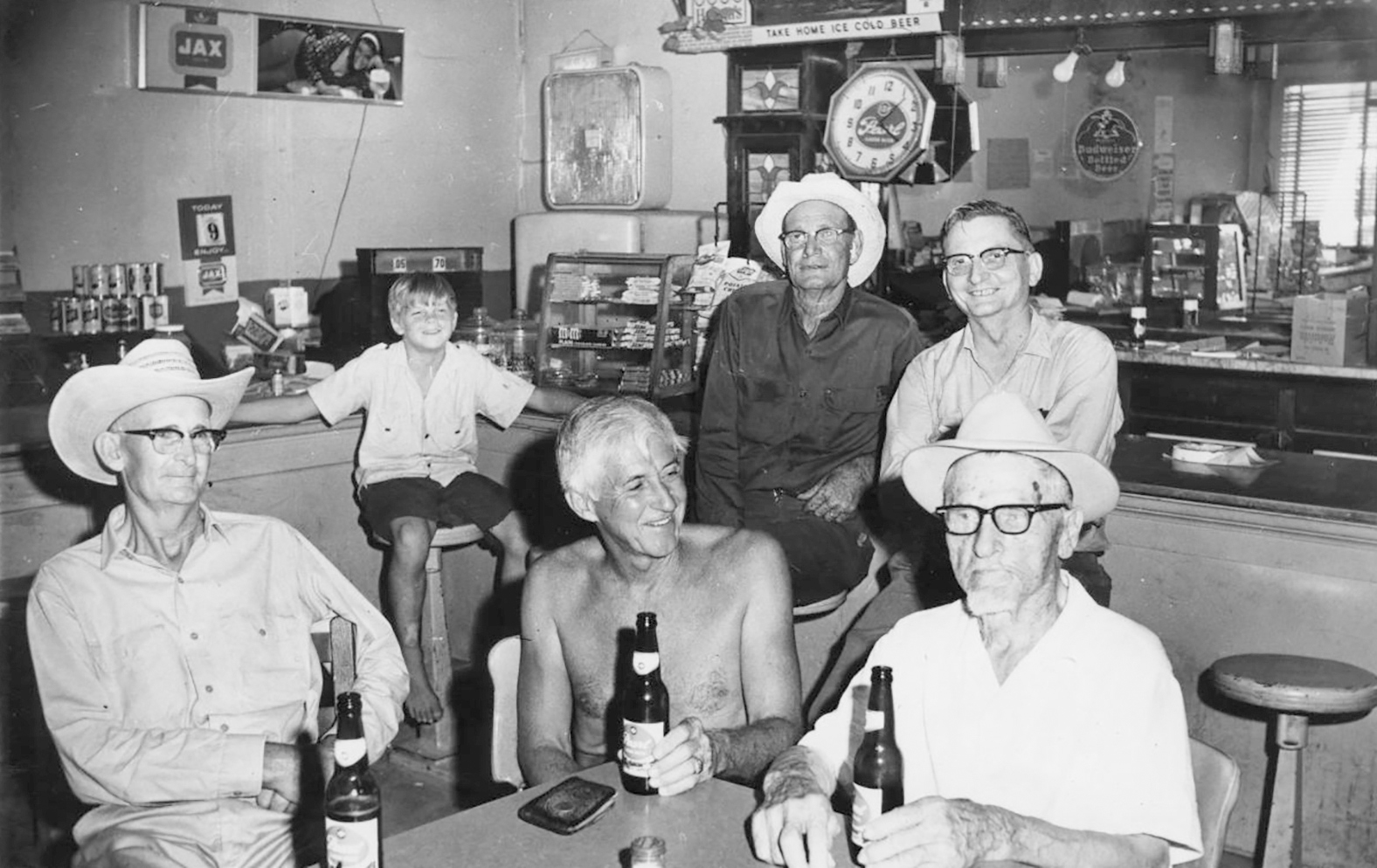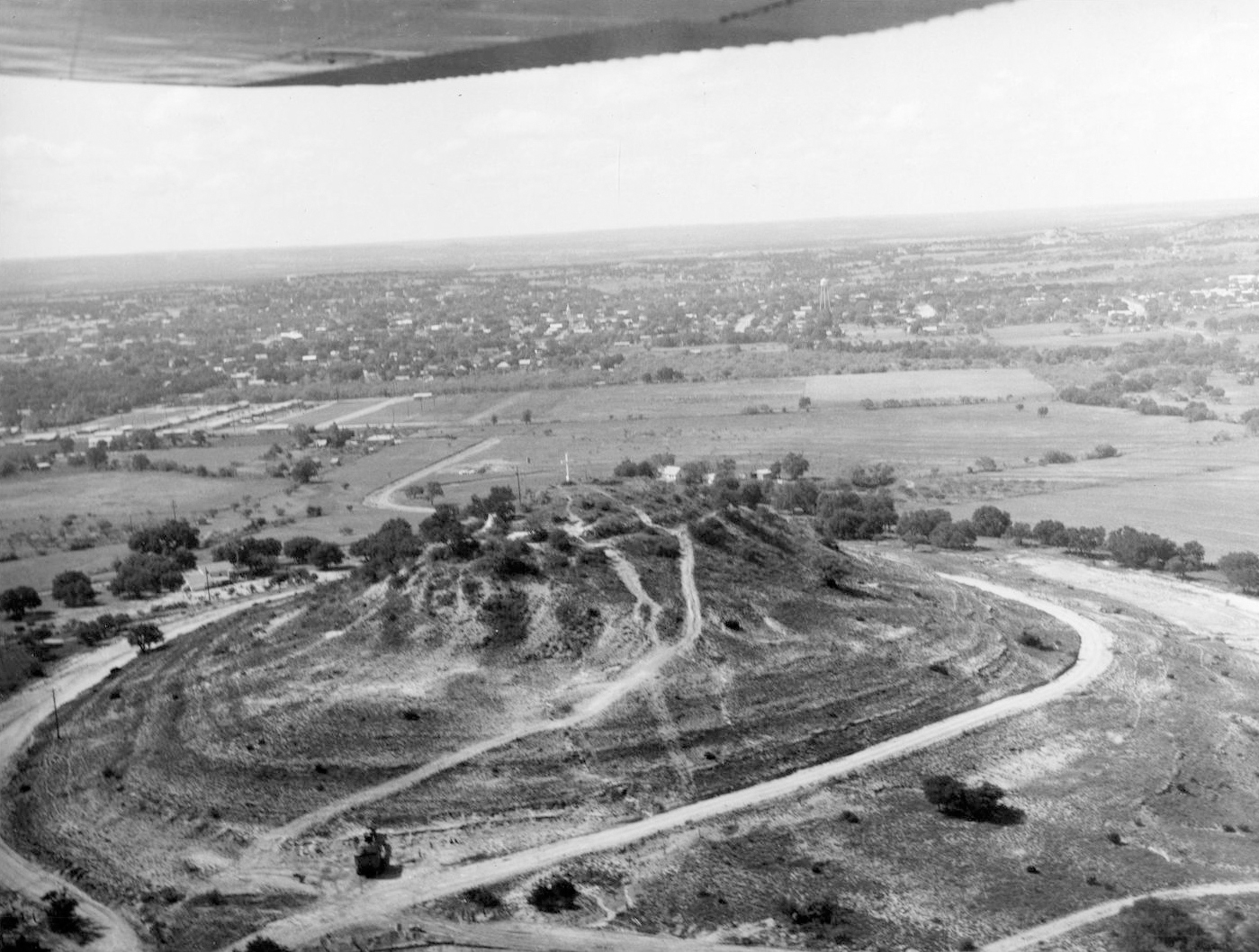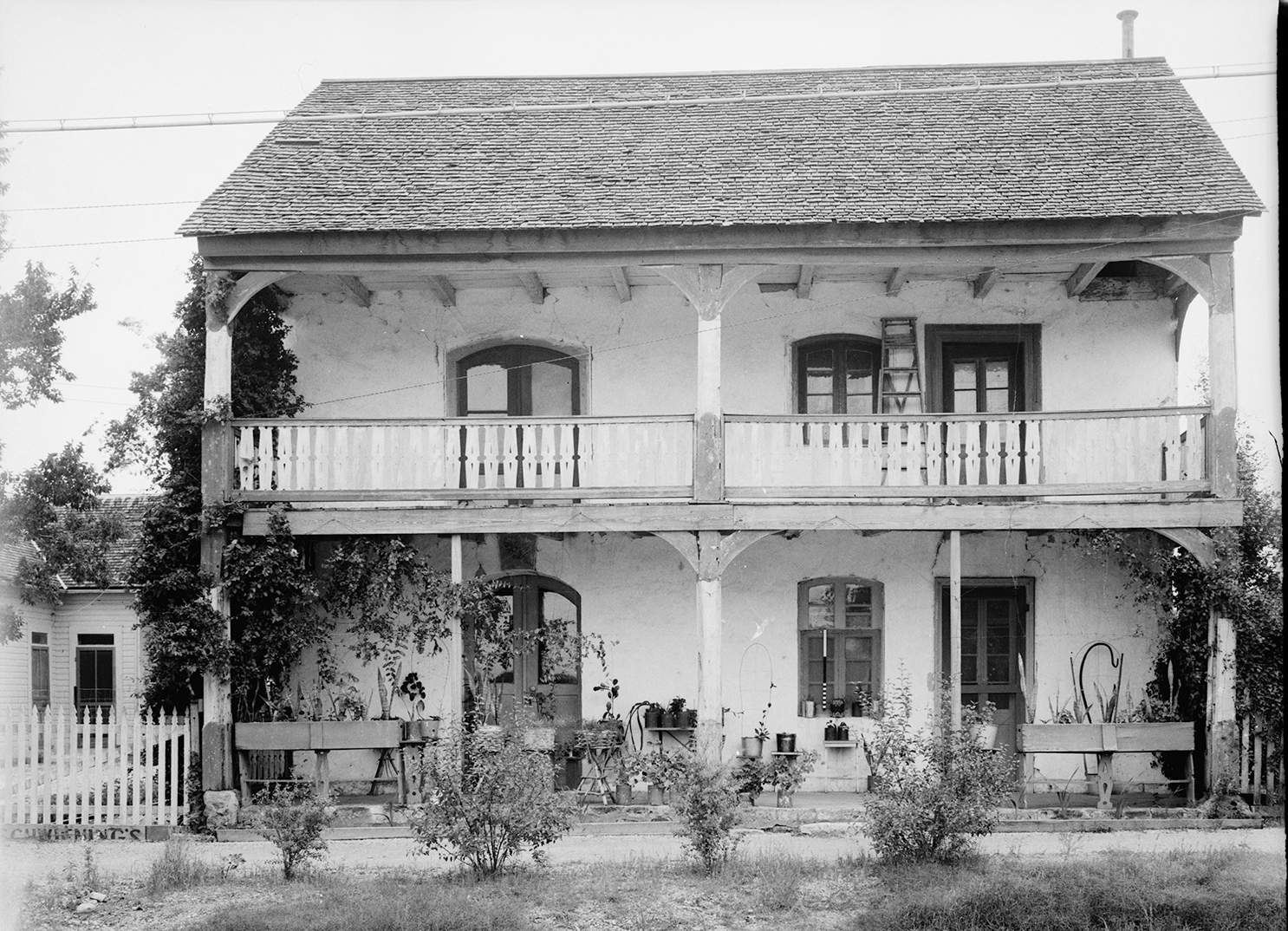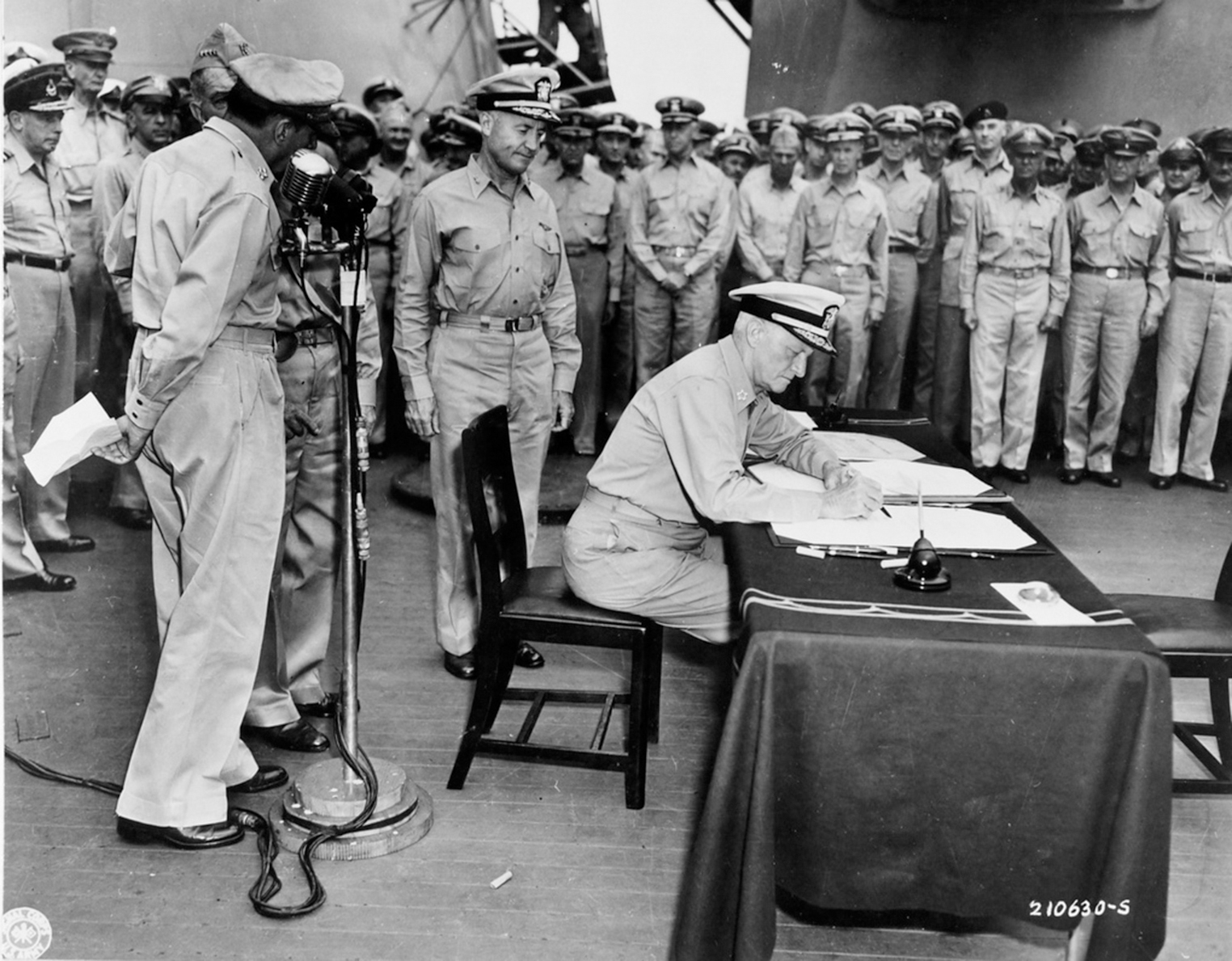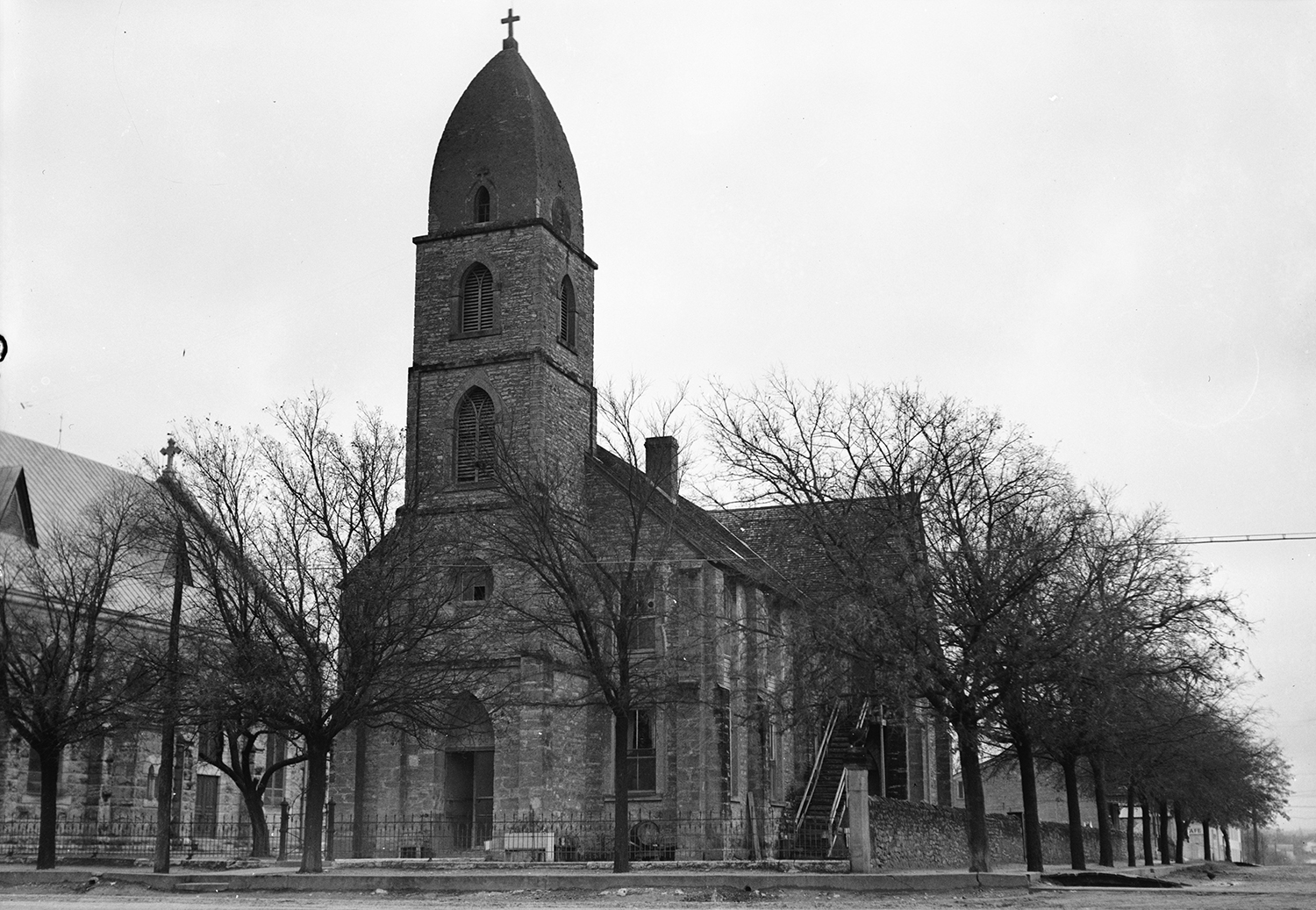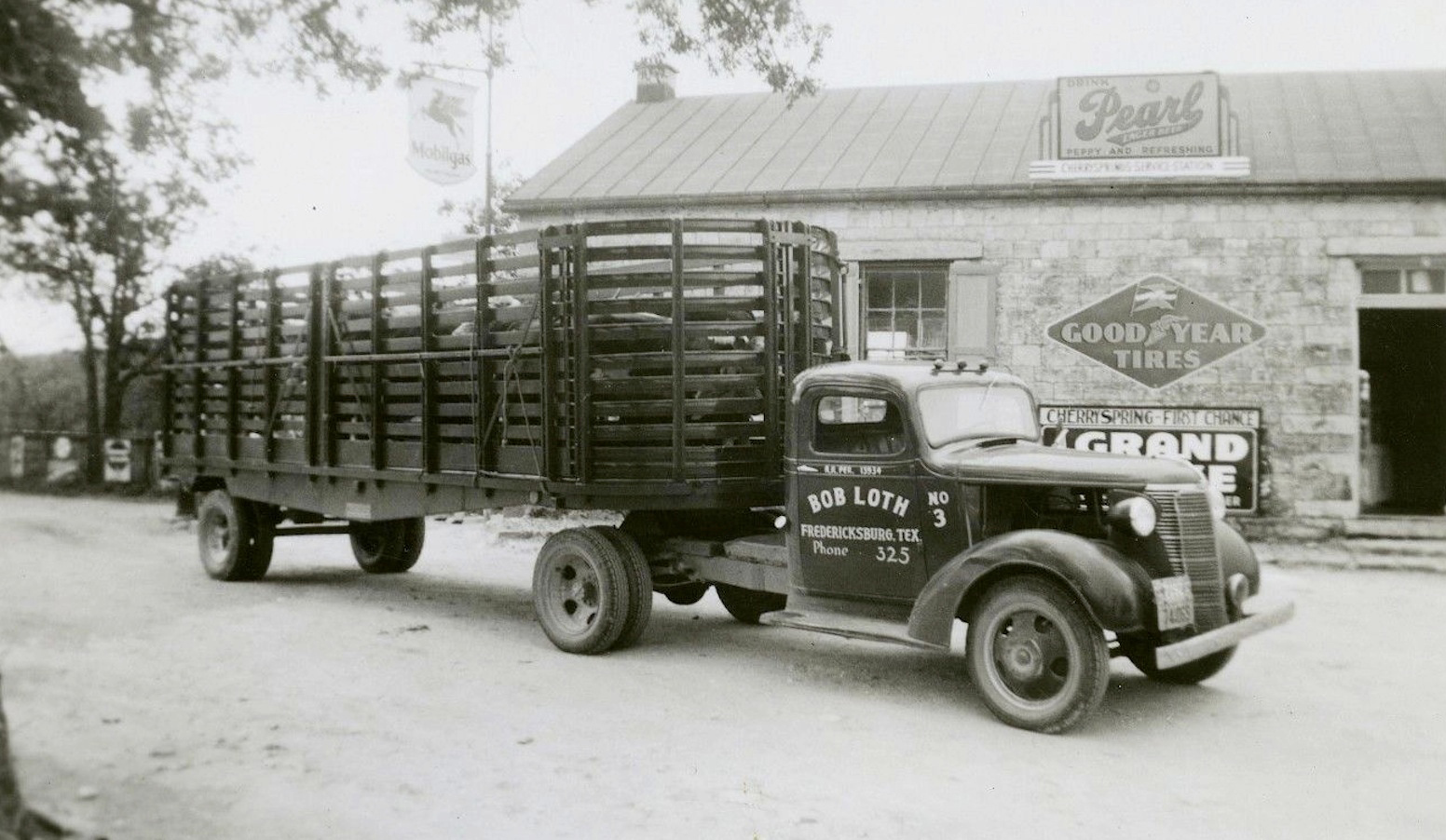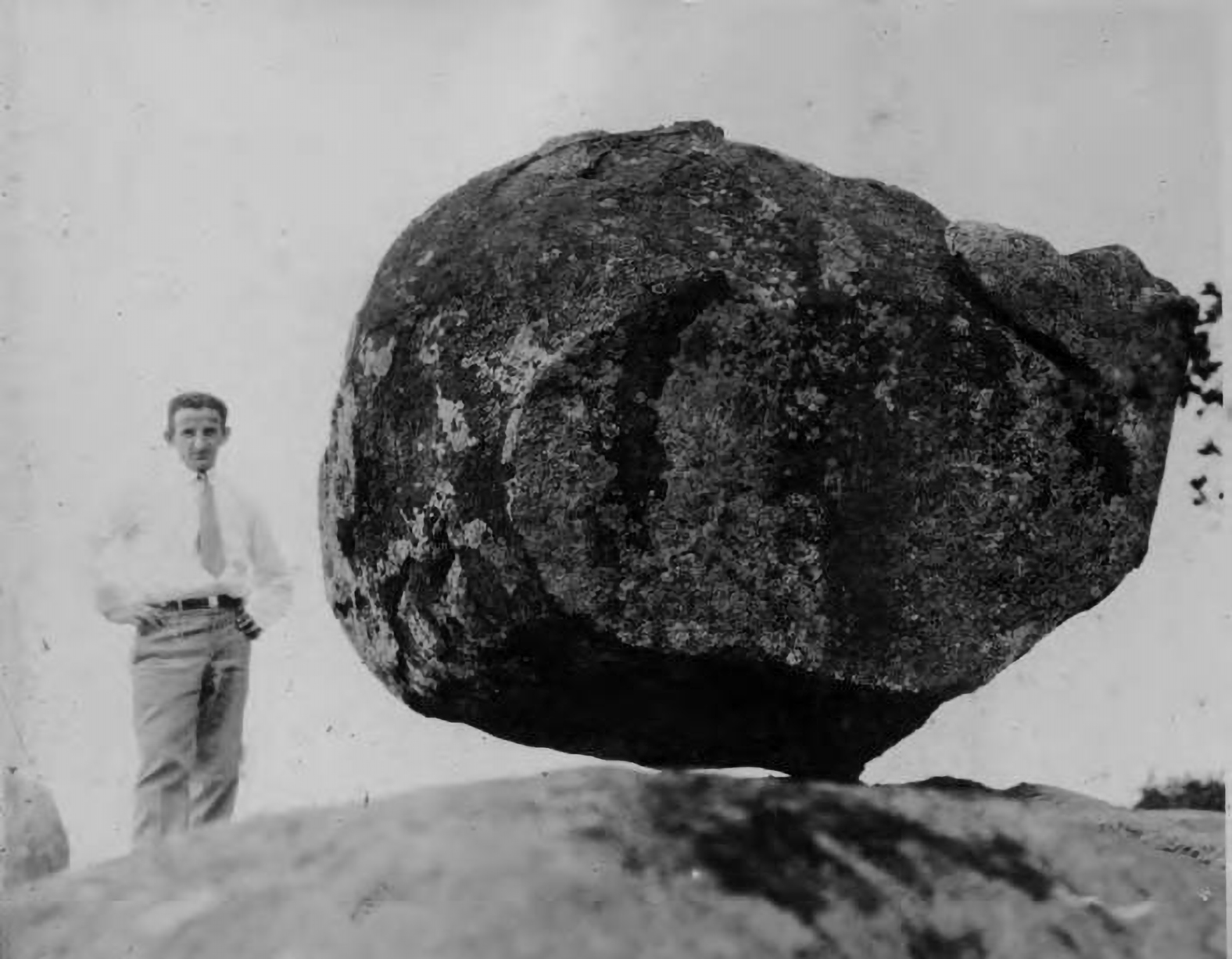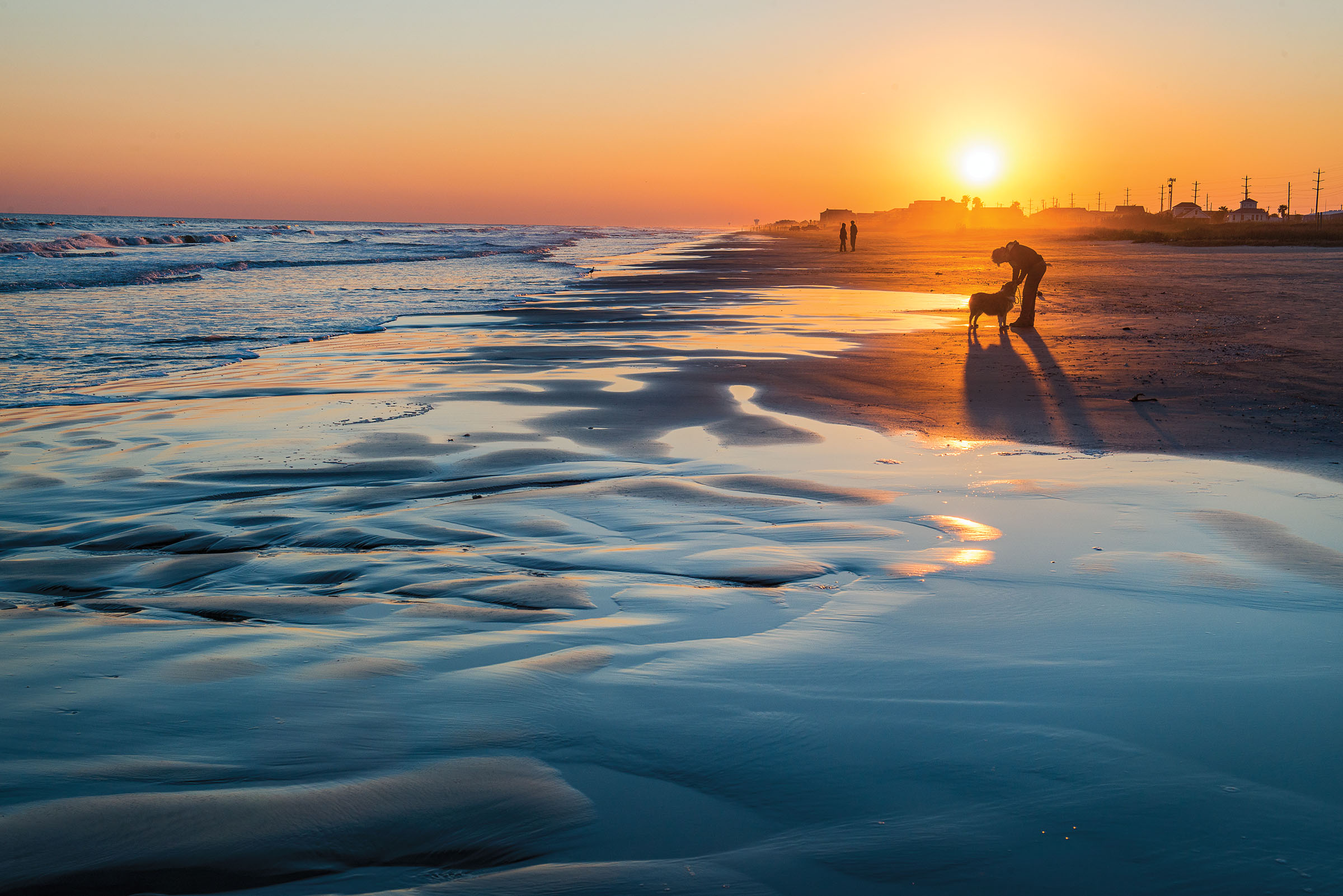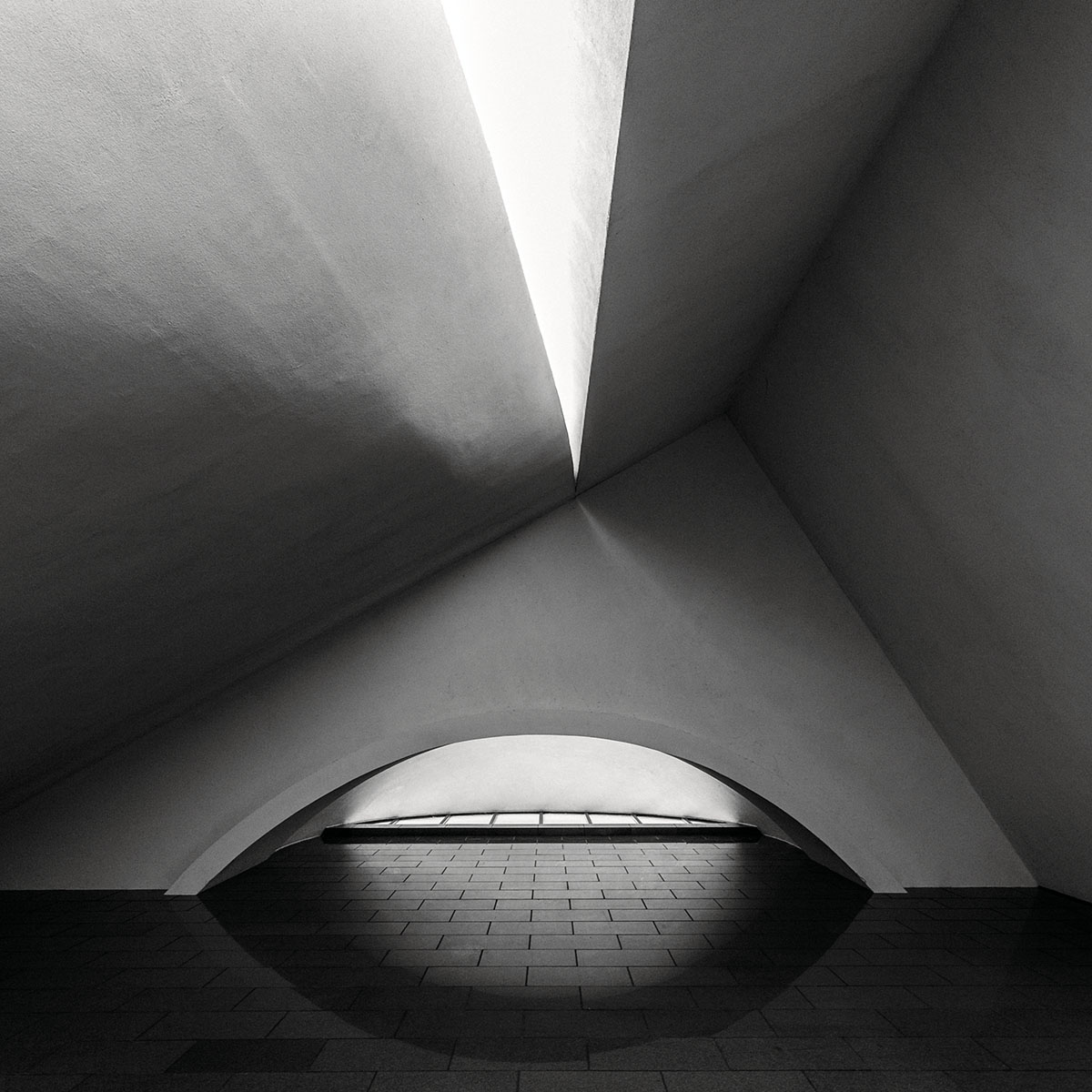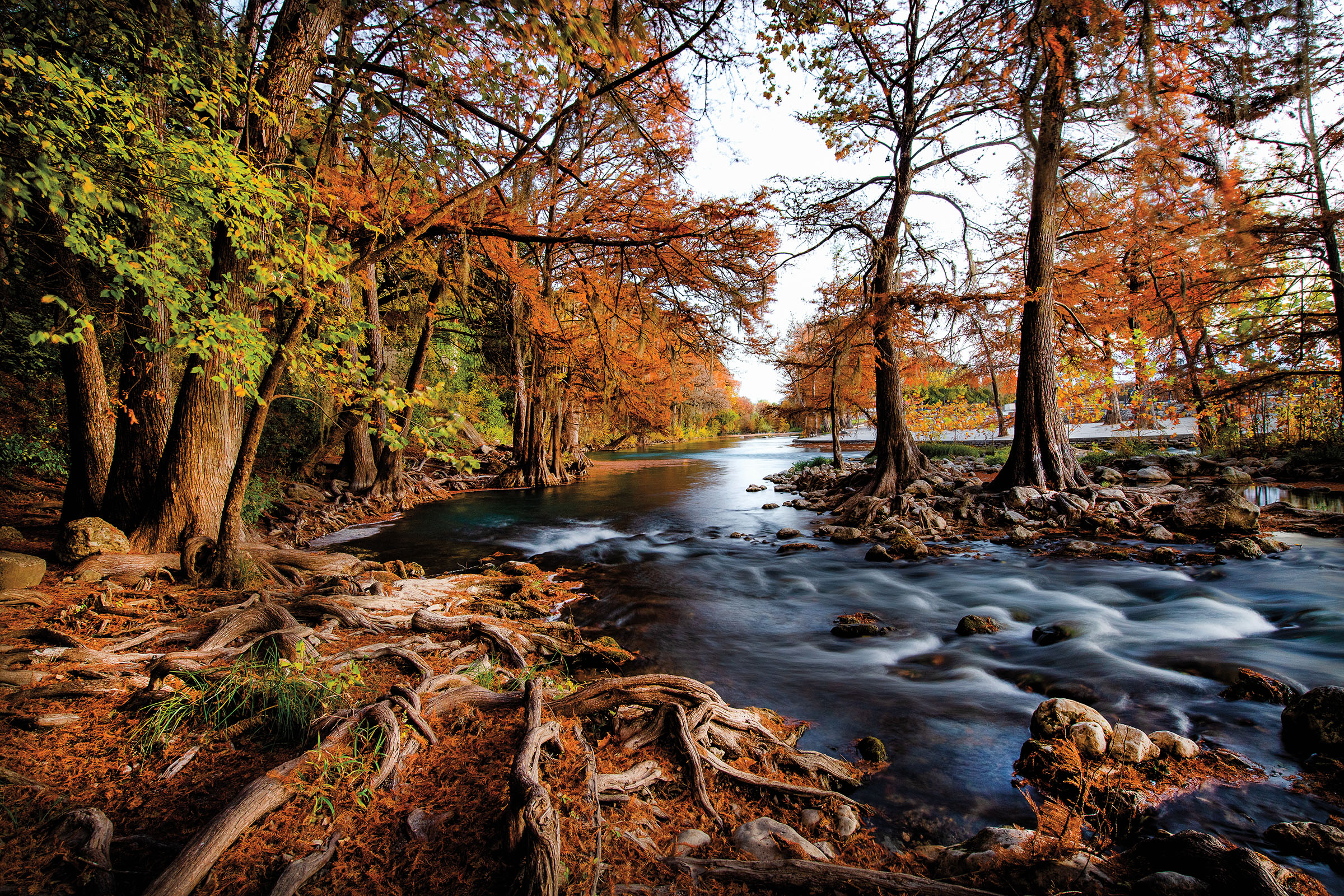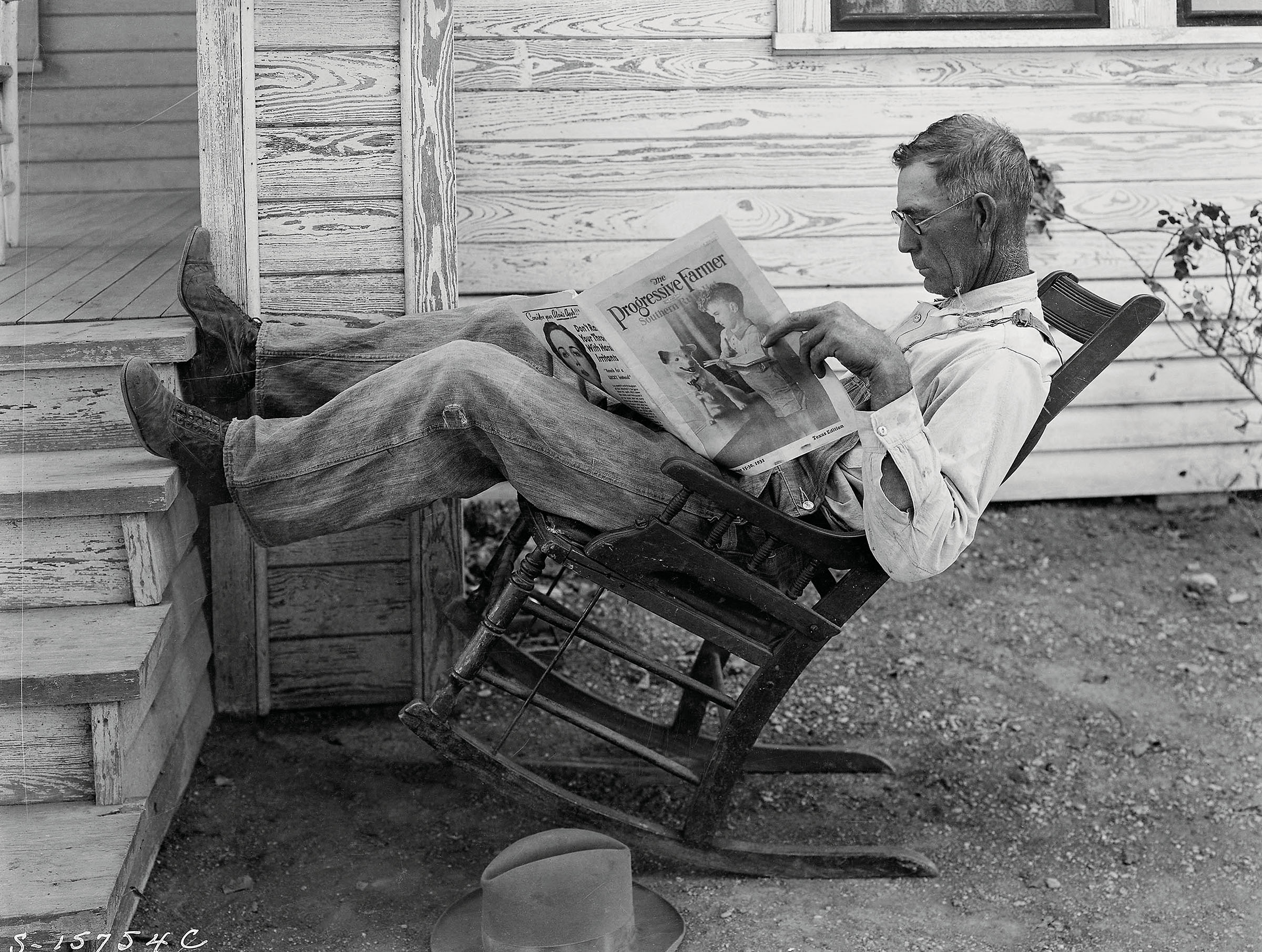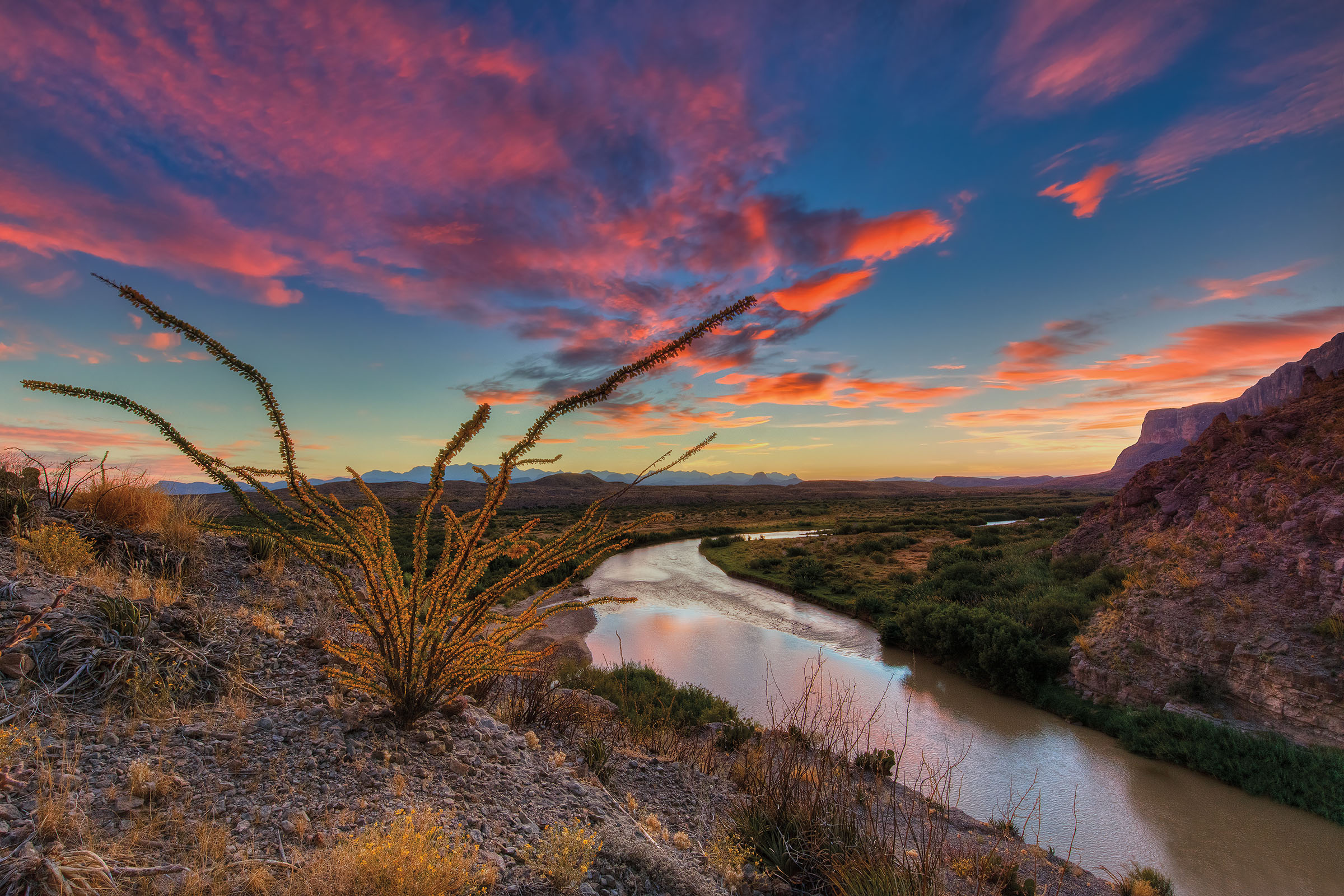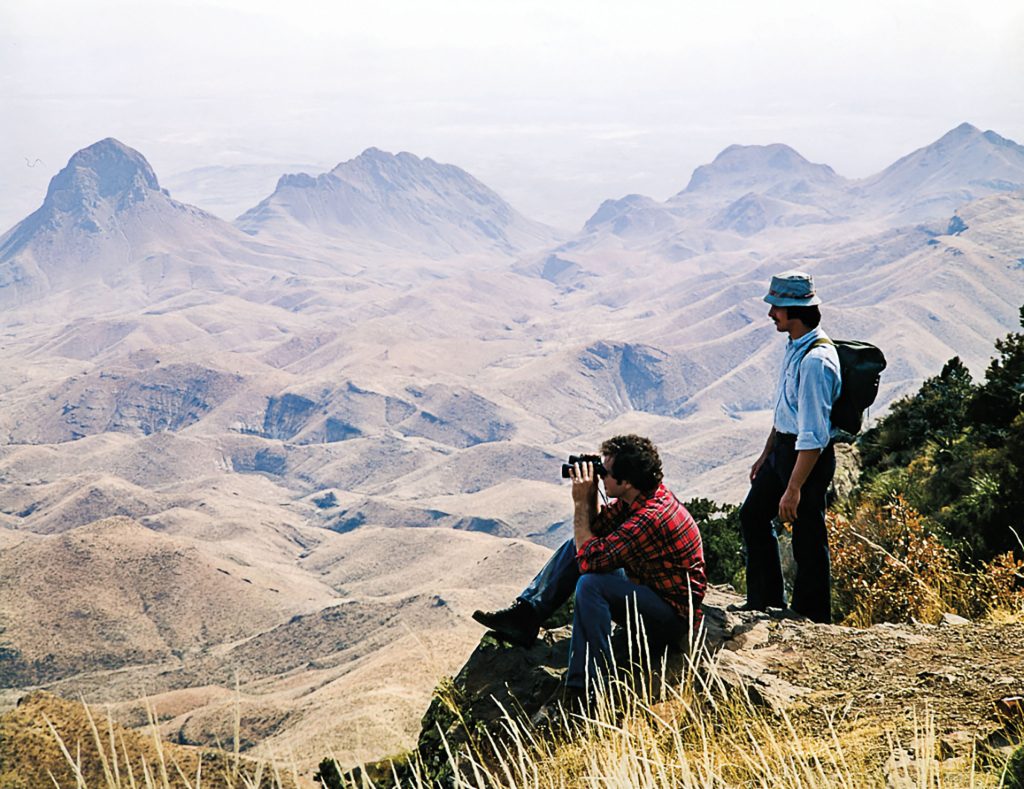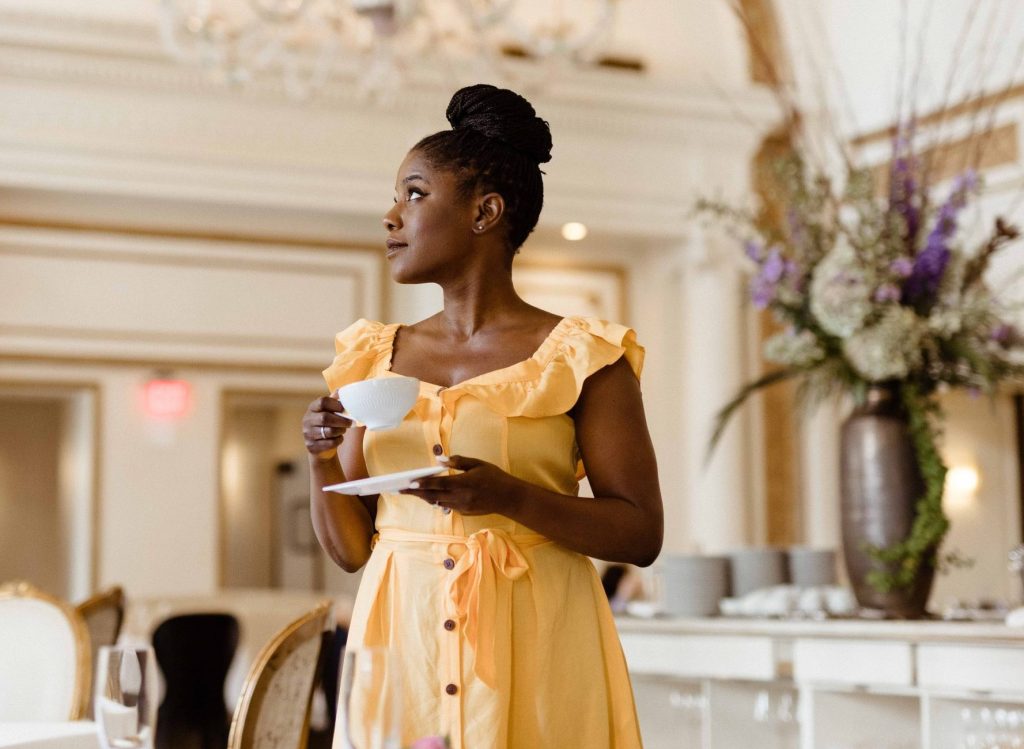A Visual History of Fredericksburg
By Traces of Texas
The stories and photos of Fredericksburg included in this article represent only a small portion of the stories and photos about Fredericksburg I have been sent over the years. Rummaging through them makes clear that this Hill Country town has long had passionate and proud citizens. Fortunately, it appears they loved taking pictures almost as much as they loved celebrations, parades, and beer, and thus left a rich photographic legacy for us to enjoy.
One can’t look through these images for long before realizing so much of the Fredericksburg shown in them is still there. The Old St. Mary’s Catholic Church opened in 1863 (shown here in 1934) still looks great. Fredericksburg’s power is its permanence. It’s interesting to look at these photos and ponder how the town has evolved from a pastoral village to the bustling scene of wine tours and bachelorette parties it is today; the buildings have seen it all. Those German stonemasons knew what they were doing.
May the next 175 years be as peaceful and prosperous as the last! [Alternately: Mögen die nächsten 175 Jahre so friedlich und erfolgreich sein wie die letzten!]
This is William Levi Buck Taylor, the original "King of the Cowboys." Taylor was born in Fredericksburg in 1857. He was orphaned when his father was killed in the Civil War. At age 14, he became a cowhand and worked all over the west, eventually meeting up with Buffalo Bill Cody, who was taken by Taylor's looks and his height: He stood 6'4" tall, a giant in those times.
Cody decided to make Taylor one of the stars of his famous traveling show and invented a whole backstory for him. Taylor died in 1924.
Sent in by an anonymous reader
Traces of Texas reader Charles Besancon sent in this incredible 1915-1920 photo of a biplane that somehow managed to land on a telephone pole in Fredericksburg.
According to Charles, they had to go all the way to Comfort to turn the electricity off.
Cynthia Faught shared this wonderful photo of her grandmother and her friends at a drugstore in Fredericksburg in 1948. Cynthia's grandmother is the woman sitting down with the headband, looking at the magazine.
It just wasn't enough that Traces of Texas reader Dan Pfeiffer sent in this remarkable photo of the R. Henke Meat Market in Fredericksburg from over 100 years ago.
The building was still standing, so Dan bought it and turned it into a contemporary art gallery. The original meat hooks still hang as well as the old line shaft that gave the shop power to drive the old meat grinder.
Jon J. Mendlovitz shared this circa 1915 photo of folks going about their business in a pastoral Fredericksburg. This came from a glass negative Mendlovitz has. He printed it as a positive, and this photo was the result. We're looking at the transition from horse and buggy to automobiles.
Fredericksburg is on the cusp of sweeping change but, on this day, is blissfully unaware.
The first Gillespie County Courthouse, 1934. It was built in 1855 on the northwest corner of the courthouse square.
In 1882, it became the Fredericksburg post office after the second courthouse was built. This structure was razed in 1940 to make room for the new post office.
Courtesy Library of Congress
Wherever there are Germans, there will be beer and there will be brass bands. This outfit was photographed circa 1900.
Courtesy UTSA Special Collections
Spectators at a horse race in 1947.
This was almost certainly at the Gillespie County Fairgrounds, which has a long history of horse racing.
Photo by Russell Lee, courtesy International Center of Photography
The history of Fredericksburg is filled with great saloons. These men are standing in front of the Bismarck Saloon in an undated photo.
Courtesy UTSA Special Collections
The Nimitz Hotel, circa 1922. The original Nimitz Hotel was built on Main Street in the late 1840s or early 1850s and acquired by Charles H. Nimitz in 1855.
The hotel had four rooms and a large central fireplace. Nimitz subsequently built a new structure of adobe and wood and eventually expanded to fifty rooms. He also operated a brewery, saloon, and general store in the hotel.
The hotel now serves as the Admiral Nimitz Museum and headquarters of the National Museum of the Pacific War.
Photo courtesy Austin History Center / Portal to Texas History
Hondo Crouch, 1972. It was Crouch who imagined Luckenbach into existence as the tourist destination that we know today.
As a younger man, Crouch had been a very good swimmer. He was a two-time all-American in the 50 and 100 yard freestyle, though later he would embroider the tale to include the winning of a gold medal in the Olympics. He always stuck out from everyone else because he dressed like a B-movie cowboy. For swim meets, he would show up on deck wearing his swimsuit, boots, and cowboy hat.
Hondo died in 1976 at the age of 60.
Courtesy UT San Antonio Special Collections / Portal to Texas History
Hondo Crouch (center, shirtless), Otto Lindig (lower right), and others drink Pearl beer in Fredericksburg, 1968.
Lindig was born in 1883, and in 1970 wrote a humorous and interesting account of the history of Gillespie County and his role in it. Among other things, he was very good friends with Lyndon B. Johnson.
The book is called 100 Years: Historical Recollections of Gillespie County and, though rare, is worth reading if you can get your hands on it.
Photo by Norman Dietel, courtesy LBJ Museum of San Marcos/Portal to Texas History.
Cross Mountain, or Kreuzberg, as seen from the air in an undated photo.
In 1757, a group of Spanish priests traveled through the Texas Hill Country to the San Saba River, where they established a mission. They paused on their trek to erect a wooden cross on a lonely hilltop.
In 1847, German immigrant John Christian Durst arrived in Fredericksburg and was assigned a plot including that hilltop. When Durst pushed though the brush to the top, he discovered the remains of the wooden cross. Durst named the hill "Kreuzberg."
Courtesy Gillespie County Historical Society/Portal to Texas History
The Kiehne-Hermann house in Fredericksburg, as it appeared in 1936.
It still stands and is located at 405 E. Main Street. It was built in 1850 by a blacksmith named Frederick Kiehne and was Fredericksburg's first two-story house.
Courtesy Library of Congress
No tour of Fredericksburg's history is complete without a mention of its most famous son, Admiral Chester Nimitz, a boy from humble beginnings in an isolated Texas town who became commander in chief, U.S. Pacific Fleet during World War II.
Here he is accepting the Japanese surrender on the U.S.S. Missouri, Sept. 2, 1945. In January 1944 on the island of Oahu, Hawaii, Nimitz hosted an “Old Texas Roundup” for all Texans who served in the Pacific. He invited an estimated 40,000 sailorsand soldiers for a barbecue lunch and an afternoon of pitching horseshoes.
St. Mary's Catholic Church at 304 San Antonio Street in 1934. The first Catholic church in Fredericksburg was a log house built in 1848.
In 1863, it was replaced by this stone building. By 1901, the church building was too small for the congregation, so a new church was designed by San Antonio architect Leo M.J. Dielmann and built by contractor Jacob Wagner in 1906. You can see part of the new St. Mary's to the left.
Now called Old St. Mary's, its place in the history of German immigration to Texas lead it to be listed as a Recorded Texas Historic Landmark in 1994.
Photo courtesy Library of Congress
Bob Loth's truck in Cherry Spring, just a few miles northwest of Fredericksburg. He owned a 1938 Chevrolet truck. There are still quite a few Loths in and around Fredericksburg.
Loth was born June 25, 1904, in Gillespie County—the 11th of 14 children. He married Norma Lydia Woerner and had four children, two of whom are still living: August John (A.J.), Francis, Franklin, and Robert Jr.
Bob died in 1972, having been an independent truck driver for most of his life, except for approximately 8 years in the 1940s when he served as Gillespie County Sheriff.
Courtesy Donna Schulte Loth
A man visits Balanced Rock, circa 1930. Balanced Rock was a 50-ton red granite boulder on Bear Mountain four miles north of Fredericksburg. It stood 10 feet high, was 12 feet in diameter, and rested precariously on three points. Nearly every kid who ever visited it tried to get it to budge, but you can't move a 50-ton boulder—at least, that's what people thought.
Sometime in April 1986, somebody used a stick of dynamite to blow it off its perch, sending it rolling down a 15-foot slope where it came to rest against another large rock.
Source: UTSA Special Collections
This story is part of our ongoing coverage of Fredericksburg’s 175th anniversary. Read more stories about the beloved Hill Country destination here.
